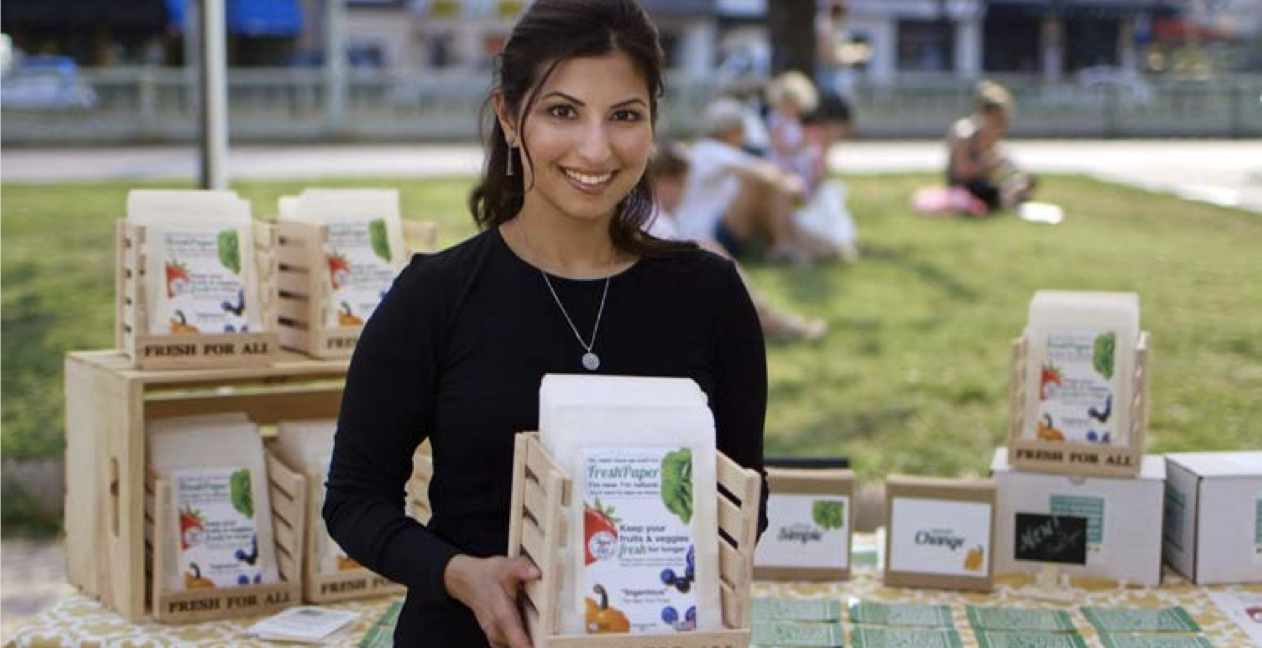Published 09 July 2020
After COVID-19, it's even more critical to support the economic empowerment of women entrepreneurs in the global economy through trade.
Prior to COVID-19, many governments were stepping up to support women’s economic empowerment. Now it’s critical for governments to make support for women’s engagement in the global economy core to economic recovery efforts.
Export premium for women-owned businesses
Women in particular benefit from an “exporter premium.” A new Global Innovation Forum report highlights the critical role of digitally-enabled networks in helping women grow their businesses through trade – something that will be even more critical after the pandemic.
Women-owned exporting businesses pay an average of 1.6 times more than firms that only sell domestically, a figure that is higher than the exporter premium for businesses owned by men. In addition, women-owned exporting businesses are 3.5 times more productive than counterparts who do not export and 1.2 times more productive than exporters led by men. Women-owned exporting businesses also tend to hire more employees and earn more revenue than those that do not.
Although women’s entrepreneurship has grown at twice the rate of men in recent years, women-led businesses still make up just a fraction of companies around the world. Women already faced a range of challenges to growing a global business. COVID-19 has layered on new uncertainty.
As governments step up their efforts to support women-owned businesses, government initiatives have taken on new meaning because helping women trade is a key part of economic recovery after the pandemic.
Good for GDP
Boston Consulting Group estimated that if women were to participate in entrepreneurship at a rate equal to men, global GDP could get a three to six percent boost. This lag in women’s entrepreneurship speaks to a number of challenges women-owned business faced before the pandemic.
Kristin Haffert is the Co-Founder of Mine the Gap, a company that equips leaders, industries and organizations with the strategies and tools needed to create and sustain gender-inclusive work environments. According to Haffert, “The number one answer is lowering the barriers of access to funding. More money needs to get into the hands of women business owners. We have to focus on how governments can approach this through policy mechanisms.”
Entrepreneurs like Thuy Nguyen, Founder of Bobi Craft, an exporter of premium hand crochet children toys and accessories in Vietnam, also say that compliance with country-specific policies and regulations such as local tax regimes can be time-consuming and confusing, influencing decisions about which markets to enter.
“The privacy rules set in a country make or break certain decisions including if I should be selling in a country,” explained Rupa Ganguli, Founder and CEO of Inclusive Trade, a UK-based e-commerce platform that allows consumers to shop by impact to benefit social, environmental and development goals.
Show her the money
Obtaining funding is the biggest challenge for entrepreneurs across the board, but women are often at a particular disadvantage when it comes to accessing money to grow their businesses globally.
Women are less likely to receive funding in early-stage decisions from private investors, as well as venture capital firms. In 2019, women-founded companies acquired only a 2.8 percent share of the capital invested in US startups. Women also raise smaller amounts of startup capital and ultimately rely on personal sources of income more than men.
“Women are totally underfunded,” explained Emma Sinclair, Co-Founder of EnterpriseAlumni, an alumni and retiree management platform. “The perpetually negative narrative around this is demoralizing as much as confusing, given women raise less money but exit more successfully and perform better in the interim,” she added. One challenge to fundraising is that women are less likely to have advisors in their networks who can make the necessary introductions to potential business investors or financial opportunities.
“A woman’s work”
During a series of roundtables by the Global Innovation Forum in 2019, woman entrepreneurs also frequently called out the gender gap in household work as a challenge to building their businesses.
“Nobody wants to talk about gender roles, but as soon as they get married and have kids, managing time between running a full-time business and running a family becomes challenging,” observed Sasibai Kimis, Founder and CEO of Earth Heir, a Malaysian ethical lifestyle brand that sells handcrafted heritage pieces made by women, refugees and indigenous people.
Prior to the pandemic, the Organization for Economic Cooperation and Development estimated that women regularly performed an average 4-6 hours of unpaid work per day across developing and developed countries. That number has almost certainly increased with schools, daycares and camps closed during the COVID-19 crisis.

Photo: Kavita Shukla of the FRESHGLOW Co. courtesy of Global Innovation Forum
Women rise to the COVID-19 challenge
Entrepreneurs and small business owners everywhere have been impacted by the COVID-19 pandemic. Many non-essential businesses were forced to close their doors until further notice.
Amid travel restrictions, lockdowns and stay-at-home orders, digital tools have become essential to enable the advisory, peer and government networks that women entrepreneurs are relying on to flourish.
Sunshine Quem Tenasco is the Founder of the Pow Wow Pitch in Canada, which endeavors to provide a supportive, empowering environment to indigenous entrepreneurs and the opportunity to access mentors and micro-grants. Tenasco quickly worked to move her pitch competition online amidst the disruption.
“Mentorship may seem like a small piece of the whole puzzle, but it’s so important because entrepreneurs just starting off always have so many questions. This way, we can open up these opportunities to any entrepreneurs throughout our communities as long as they have access to the Internet,” shared Tenasco.
SHE Investments, a social enterprise delivering business development programs for women in Cambodia, moved its team to electronic platforms for team meetings, webinars, timesheets and online classes to keep their own team connected and productive in response to COVID-19 while continuing to provide resources to their clients. “We are creating video tutorials on our laptops to help our team and our participants to learn [how to work from home],” observed Celia Boyd, Co-Founder and Managing Director of SHE Investments.
Government programs to help women export
Prior to the COVID-19 crisis, many governments had begun to prioritize support for women’s entrepreneurship by incorporating gender considerations in trade agreements, prioritizing the participation of women entrepreneurs in trade promotion programs, and by leveraging government-led small business assistance efforts to foster long-term networks for women entrepreneurs.
For example, the Government of Canada developed a comprehensive Women Entrepreneurship Strategy (WES), a more than US$2 billion whole-of-government approach to help women grow their businesses through increasing access to financing, talent, networks and expertise.
Despite this progress, a report prepared by the Australian Department of Foreign Affairs and Trade points out that women entrepreneurs are “significantly underrepresented” as clients of government trade promotion organizations. Governments could address this disparity by actively recruiting more women-owned businesses into trade promotion programs but also by developing sustainable networks of women-owned small businesses and government officials, rather than focusing on one-off events.
Government policies to help women export
With women embracing digital tools to grow their businesses globally, COVID-19 provides further impetus for governments to promote digital trade rules that enable the uptake of digital productivity technologies, payments, communications, marketing and e-commerce platforms that have all acted as lifelines during the crisis.
Countries can also advance the use of technology solutions like blockchain and Artificial Intelligence to reduce administrative burdens on small businesses and improve security, trust and speed for shipping, payments and supply-chain traceability.
The US-Mexico-Canada Free Trade Agreement, which went into effect July 1, provides a good starting point for considering the kind of digital trade, customs and small business provisions that can ensure that entrepreneurs across North America have access to the e-commerce ecosystem.
Technology-using companies export more
Finally, businesses that use technology are more likely to engage globally. In the United States, a whopping 72 percent of women-owned small businesses that use PayPal export their goods and services.
On the road to pandemic economic recovery, one of the most important actions governments could take is to make digital tools and digital trade widely accessible. Trade policy can help women-owned businesses engage fully in the global economy.
Feature image: The leadership team at Earth Heir courtesy of Global Innovation Forum
© The Hinrich Foundation. See our website Terms and conditions for our copyright and reprint policy. All statements of fact and the views, conclusions and recommendations expressed in this publication are the sole responsibility of the author(s).



